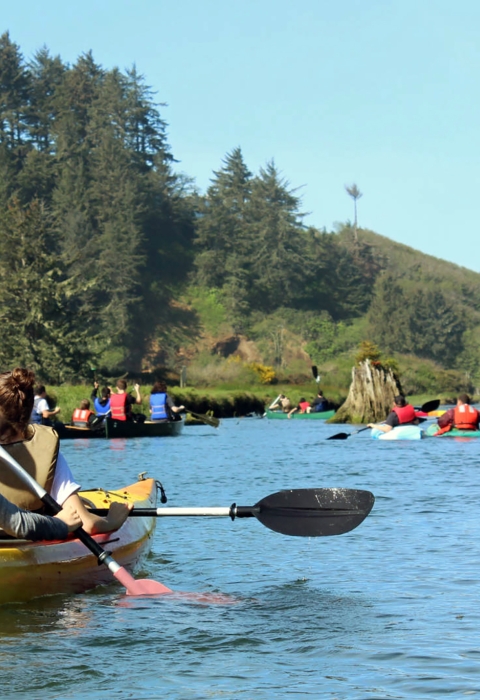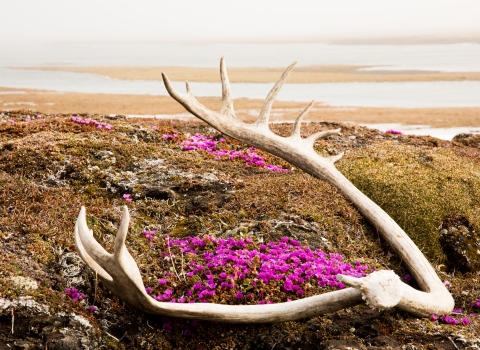WASHINGTON – Today, U.S. Department of the Interior Secretary David Bernhardt is awarding more than $20 million to 22 projects in 11 coastal states to protect, restore or enhance more than 7,000 acres of coastal wetlands and adjacent upland habitats under the U.S. Fish and Wildlife Service’s National Coastal Wetlands Conservation Grant Program.
State and local governments, private landowners, conservation groups and other partners will contribute more than $26.7 million in additional funds to these projects. These grants will have wide-reaching benefits for local economies, people and wildlife – boosting coastal resilience, reducing flood risk, stabilizing shorelines and protecting natural ecosystems.
“Through the National Coastal Wetlands Conservation Grant Program, we are demonstrating our commitment to promoting coastal sustainability with healthy ecosystems, vibrant economies and resilient communities,” said Bernhardt. “These projects will continue successful conservation partnerships with numerous public, non-profit and private stakeholders while providing public education and research opportunities as well as conserving thousands of acres of coastal habitat.”
Wetlands in coastal watersheds are diverse and complex ecosystems that are vital to the nation’s economy and an important part of the nation’s natural heritage. Coastal wetlands in the United States include both salt marshes in estuaries and freshwater wetlands that extend inland within the coastal drainages. They provide crucial habitat for fish, birds and other wildlife, including breeding grounds, nurseries, shelter and food.
States receiving funds this year are Alabama, California, Florida, Georgia, Maine, Maryland, Massachusetts, North Carolina, Texas, Washington and Wisconsin. Click here for the complete list of projects funded by the 2019 grant program.
“These grants are a superb example of states, local governments and private landowners working hand-in-hand with the federal government to ensure coastal communities and their irreplaceable natural environments continue to thrive for future generations,” said U.S. Fish and Wildlife Service Principal Deputy Director Margaret Everson. “In addition to providing myriad conservation and economic benefits, these grants will increase recreational opportunities for anglers, boaters, hunters and wildlife-watchers across the nation.”
The program, funded in part through taxes paid on equipment and fuel purchases by recreational anglers and boaters, creates significant benefits for the American public. The billions of dollars generated through recreational angling, boating, waterfowl hunting and birdwatching benefit communities in the vicinity of wetlands restoration projects.
The Service awards grants of up to $1 million to states based on a national competition, which enables states to determine and address their highest conservation priorities in coastal areas. Since 1992, the Service has awarded more than $400 million in grants under the program.
Examples of projects receiving grants today are:
Point Au Sable Nature Preserve/Wequiock Creek Coastal Wetlands
The Wisconsin Department of Natural Resources, in partnership with the Northeast Wisconsin Land Trust and the University of Wisconsin-Green Bay, is awarded $450,000 to acquire 73.8 acres of land along Wequiock Creek and to restore 25 acres of emergent wetlands on the adjacent Point au Sable Nature Preserve in Brown County, Wisconsin. The area attracts more than 220 species of migratory birds, including bald eagles, and habitat for a highly productive fish community, amphibians, bats, mammals and invertebrates. The project will also provide opportunities for fish and wildlife-based recreation and public use and enjoyment of natural resources. The outcomes will expand educational and research opportunities at the Point au Sable Nature Preserve.
Shellbine Acquisition
The Georgia Department of Natural Resources is awarded $1 million to help protect approximately 1,899 acres of diverse habitat known as the Shellbine Tract in Glynn County Georgia. The area includes tidal wetlands and adjacent uplands in the lower Satilla River watershed. More than 100 rare plants and animals occur at the site. The tract is part of a larger project by the state, The Nature Conservancy, Open Space Institute and U.S. Department of Defense to conserve an 11,000-acre area and connect 1.5 million acres of conservation lands in the Coastal Georgia Ecoregion, including Okefenokee National Wildlife Refuge and the Altamaha River Corridor, and increase recreational access to coastal waters.
Meter Point Protection
The North Carolina Division of Coastal Management is awarded $913,000 to acquire 35.6 acres of barrier island maritime evergreen forest and wetland habitats on Little Colington Island in Dare County, North Carolina. Protection of the tract will enhance the ecological integrity of the Kitty Hawk Woods Coastal Reserve and other cultural sites in the area. The site will be accessible to the public by boat, and the state will work with the Albemarle-Pamlico National Estuary Partnership, The Nature Conservancy and Dare County to install educational signage at nearby public boat ramps that describes the importance of protecting maritime forest and coastal wetland habitats.
Tidmarsh Restoration Project Phase 3
The Massachusetts Division of Ecological Restoration, in partnership with the Town of Plymouth, Mass Audubon, Natural Resources Conservation Service, Living Observatory and Ducks Unlimited, is awarded a $1 million grant to restore hydrology in Foothills Preserve and the West Beaver Dam Brook sub-watershed in Plymouth, Massachusetts. The project will protect and restore approximately 42 acres of retired cranberry bogs, approximately five acres of degraded floodplain and 1.27 miles of stream channel. The project will eliminate fish passage fish passage
Fish passage is the ability of fish or other aquatic species to move freely throughout their life to find food, reproduce, and complete their natural migration cycles. Millions of barriers to fish passage across the country are fragmenting habitat and leading to species declines. The U.S. Fish and Wildlife Service's National Fish Passage Program is working to reconnect watersheds to benefit both wildlife and people.
Learn more about fish passage barriers, reconnect freshwater streams and wetlands, and restore the native plant community to create a healthy, self-sustaining mosaic of native wetland habitat types. The project will provide high-quality nursery habitat for migrating fish and resting and dabbling habitat for waterfowl. It will also create opportunities for passive wildlife-oriented recreation and education for the community.
The National Coastal Wetlands Conservation Grant Program is administered by the Service and funded under provisions of the 1990 Coastal Wetlands Planning, Protection and Restoration Act. Funding is provided by Sport Fish Restoration Act revenue – money generated from an excise tax on fishing equipment, motorboat and small engine fuels.
More information is available at: https://www.fws.gov/service/national-coastal-wetlands-conservation-grants.



